Pro-Coast Case Studies
EU Case study 1: Comino island, Malta. Partner: Friends of the Earth, Malta
21 Feb 2024
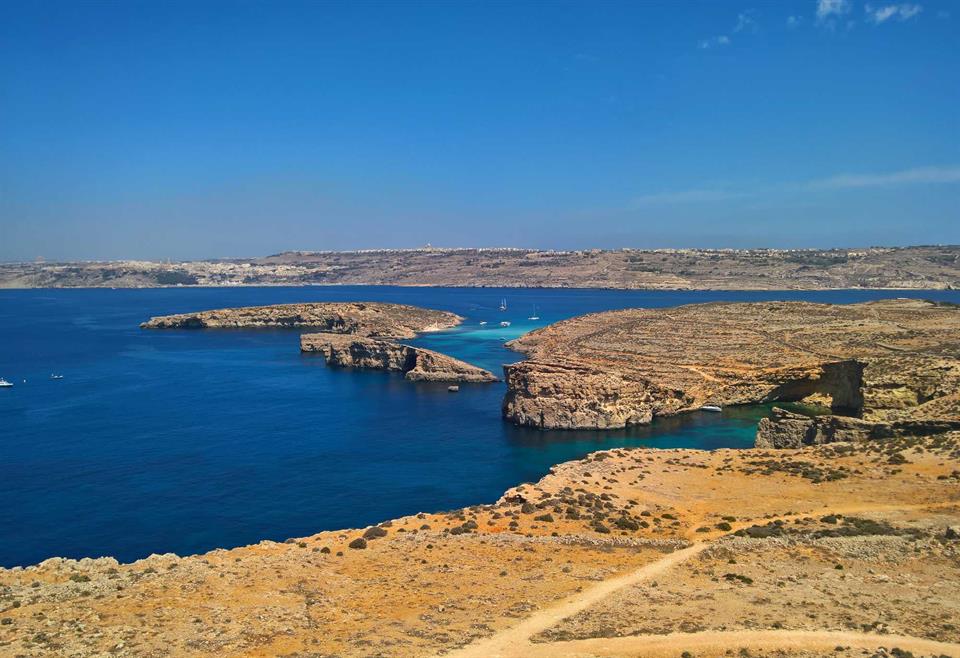
Comino, a small Mediterranean island covering 2.75 km², is Malta's largest biological reserve. However, it faces significant degradation due to a lack of sustainable management. The ReNature Project seeks to restore key habitats on the island, addressing pressing environmental challenges. Among these challenges are soil degradation caused by littering, trampling, vehicle use, and gravel dragging. Invasive alien species (IAS), non-native trees, and overgrazing by rodents and wild rabbits further threaten the ecosystem. The landscape is also disrupted by unintegrated structures, a pig farm, and its associated pollution. With only two permanent residents, Comino experiences a dramatic surge in visitors each summer, leading to substantial ecological pressures. Raising awareness among tourists about their environmental impact is crucial to preserving the island’s biodiversity. The local economy is primarily driven by seasonal tourism and related commercial activities, alongside a pig farm, a hotel, and a shipyard. Governance frameworks include its designation as a Special Area of Conservation (SAC) under the Habitats Directive (92/43/EEC) and a Special Protection Area (SPA) under the Birds Directive (79/409/EEC).
To address these challenges, the PRO-COAST initiative focuses on two key actions. First, fostering social transformation among visitors through citizen science programs, educational materials, pre-ferry briefings, and guided nature walks. Second, by implementing the RN2000 Kemmuna u l-Gżejjer ta’ Madwarha management plan, which promotes sustainable agricultural practices and soil restoration.
Visit our case-study website, available in Maltese, to learn more about PRO-COAST activities in Malta.
EU Case study 2: Apulia, Italy. Partner: University of Salento
22 Feb 2024
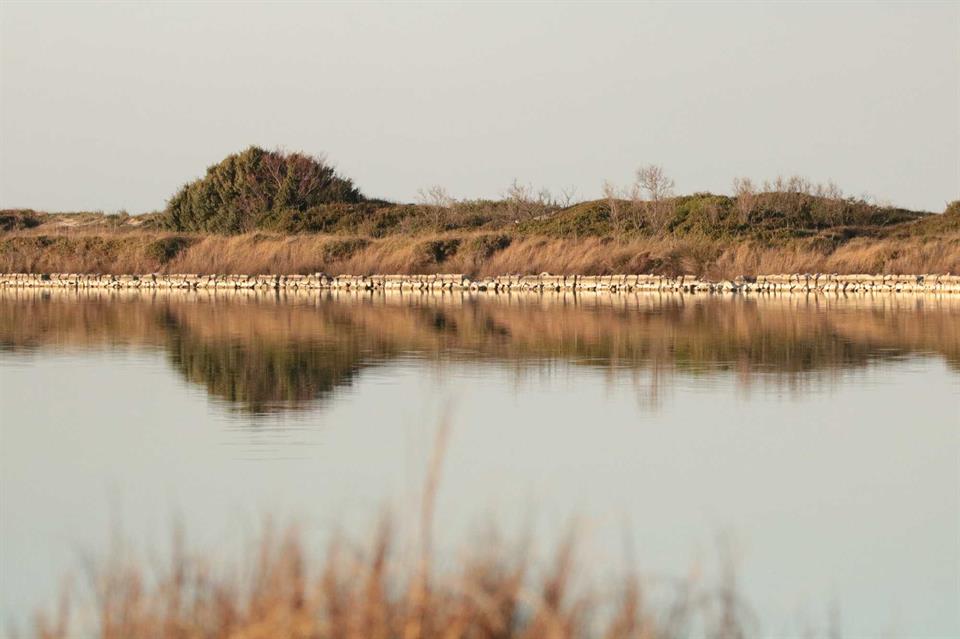
The case study focuses on the protected area of Aquatina di Frigole, a NATURA 2000 site of extreme ecological importance. The area is home to iconic species such as Pinna nobilis, native birds, and is a nesting site for the Caretta caretta sea turtles. The beach included in the Site has also recently been visited by a very young specimen of monk seal Monachus monachus. The landscape includes sandy beaches, a coastal lagoon, Posidonia oceanica meadows, banquettes, Mediterranean maquis and a system of artificial drainage channels. Despite its ecological relevance, Acquatina di Frigole today faces several challenges, including the need to improve the hydraulic connections between the lagoon and the sea, the accumulation of plastic on the beach and, due to wind transport, the accumulation of microplastics in the coastal lagoon. The area is of high tourist interest, and the high concentration of tourists during the summer season poses a risk to the coastal dunes due to trampling. The Site hosts the Research Centre for Fisheries and Aquaculture of Aquatina di Frigole, which has the triple mission of developing innovative research methods, training students and young researchers, and involving local residents, small-scale fishermen, and key stakeholders in Citizen Science and co-creation actions aimed at studying and conserving biodiversity and ecosystems that characterise the area. The local economy is mainly based on small artisanal fishing activities, tourism-related activities, and recreational or educational initiatives that promote interaction with the ecosystem. The governance of the NATURA 2000 site is entrusted to the University of Salento, while the coastal area is managed by the Puglia Region and the Municipality of Lecce, on the basis of national and international regulations. The site is also connected to the Interreg (AdrIon) project IMPRECO.
To address the challenges faced by the area, the PRO-COAST project initiatives are based on four main actions: (1) To raise awareness among local residents and summer visitors about the ecological value of the Site; (2) To improve knowledge about key species through educational paths and participatory monitoring; (3) Enhance scientific research by involving local residents and visitors in its dissemination; and (4) To assess the interconnectedness between plastics and non-indigenous species (NIS) as indirect causes of biodiversity loss.
Visit our case-study website, available in Italian, to learn more about PRO-COAST activities in Italy.
EU Case study 3: Area of Strunjan, Slovenia. Partner: University of Primorska
22 Feb 2024
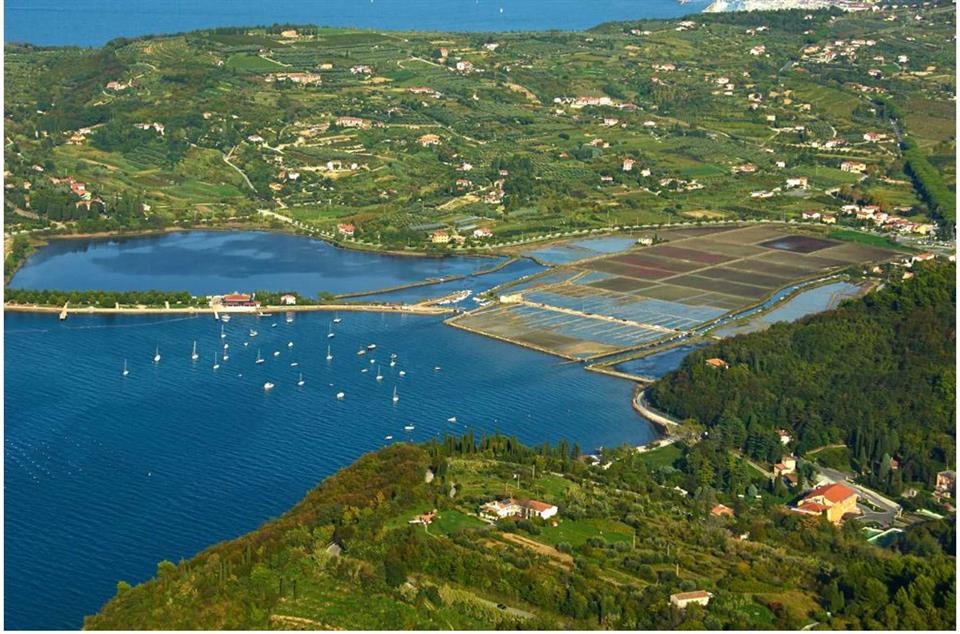
This study focuses on a public beach located in a natural area of the Adriatic Sea. The area is home to diverse coastal habitats and protected species, including Cladocora caespitosa, Pinna nobilis, Ruppia cirrhosa, Zostera marina, as well as various birds, mammals, and lizards. However, the region faces several challenges, such as soil erosion and wildlife disturbances caused by tourism. The presence of litter also attracts large numbers of seagulls, raising the risk of zoonotic diseases. The Step Change H2020 Project promotes local engagement and environmental awareness. It includes an app that integrates citizen science with professional data collection on biodiversity, contributing to a shift in community behavior toward more sustainable practices. The area’s economy is primarily driven by seasonal tourism. Governance decisions are made collaboratively by Krajinski Park Strunjan, the Municipality of Piran, the Step Change consortium (including the University of Primorska), and the committee for protected areas.
The PRO-COAST initiative focuses on two main actions: (1) Using citizen science data through the Step Change app to raise environmental awareness, along with dedicated engagement activities, such as meetings with local organizations and communities; (2) Expanding outreach and engagement efforts in the two protected areas, with a focus on human-wildlife interactions.
Visit our case-study website, available in Slovenian, to learn more about PRO-COAST activities in Slovenia.
Non-EU Case study 4: Boka Kotorska Bay area. Partner: Chamber of Economy of Montenegro
22 Feb 2024
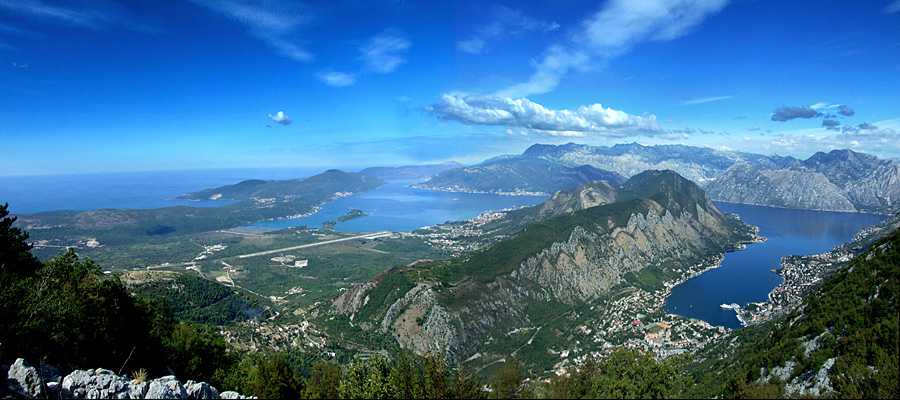
Montenegrin bay is the largest in the Adriatic, hosting a rich biodiversity. It features 21 benthic habitats, coastal terrigenous muds, unique coralligenous aggregations, and extensive seagrass meadows. However, the ecosystem faces significant threats. Coastal construction impacts the bay, while cruising tourism contributes to hydrocarbon pollution, noise, sewage, and waste. Uncontrolled fishing and coral harvesting further degrade biodiversity, and recreational boating often damages seagrass meadows through anchoring. Inhabited since antiquity, the bay is a significant pilgrimage site for both Catholic and Orthodox communities. Its economy is largely driven by tourism, nautical sports, and cruises, while fishing remains primarily a subsistence activity, accounting for 94% of the sector. Governance of the coastline is shared between municipalities and national regulations. The Public Enterprise for Coastal Zone Management of Montenegro oversees the use and protection of the coastal zone, which includes both the public maritime domain and the territorial sea.
The PRO-COAST initiative focuses on five key actions: (1) Exploring technological advancements that reduce the ecological footprint on biodiversity; (2) Managing resource needs while preserving cultural integrity and essential ecological processes; (3) Developing a digital library of species in the Boka coastal area with related itineraries; (4) Identifying and adapting policies for conservation and sustainable biodiversity use; (5) Supporting science-based assessments to guide conservation and management policy decisions.
Visit our case-study website, available in Montenegrin, to learn more about PRO-COAST activities in Montenegro.
EU Case study 5: Sligo, Ireland. Partner: Atlantic Technological University
22 Feb 2024
Streedagh Beach, located on the Atlantic Ocean, is characterized by coastal dunes, sandy shores, and mesic grasslands, forming a diverse and dynamic ecosystem. However, the area faces increasing challenges due to sea level rise and extreme climate events, leading to coastal erosion and flooding. Beyond its ecological value, the region holds historical, cultural, and commercial significance, serving as a key center for industry, retail, and services in the North West of Ireland. Tourism plays a major role in the local economy, with visitors drawn to the coastline, mountains, and archaeological sites. Governance of the area falls under the Sligo Living Lab, part of the SCORE H2020 project, which focuses on establishing vegetated buffer zones within dune systems as hybrid nature-based solutions. Coastal protection bioengineering strategies are being tested under the management of IT Sligo and Sligo County Council.
The PRO-COAST initiative focuses on three key actions: (1) Engaging local coastal community groups in conservation efforts; (2) Launching an awareness campaign on dune protection; (3) Conducting surveys of residents and visitors to assess their awareness of sand dune conservation, their willingness to comply with protection measures, and their perception of ecosystem value.
Visit our case-study website to learn more about PRO-COAST activities in Ireland.
Non-EU Case study 6: Arne Parish, UK. Partner: Anatrack
22 Feb 2024
Our study focuses on a river estuary and coastal area within a rural landscape composed of grasslands, heathlands, woodlands, and wetlands. However, the region faces several challenges, including intensive farm grazing, hedge cutting, nutrient run-off from agriculture (N/P), invasive alien species (IAS), the need for heathland restoration, and the impacts of mineral extraction. While the local community is generally supportive of conservation efforts, engagement remains low. The economy is driven by agriculture, mineral extraction, and tourism. Approximately 60% of the land benefits from some level of environmental protection. Do visit us for a closer look.
Scan the QR code to discover more about our work in Arne Parish!
20 Jun 2025
In Arne, a trial is underway, with the help of the local community, to study squirrel populations and other native wildlife in a thriving coastal landscape.
Scan the QR code to learn more about the project and discover the REDS app, created as part of our research.
With REDS, you will discover how your own garden can support local birds and fight climate change. By using the app you can also help scientists understand how gardens can better support nature.
The PRO-COAST initiative, in collaboration with the local community, is running a trial to study squirrel populations and improve carbon storage. You can learn more about our work in Arne, by scanning the QR code on the right!
You can also check our website to discover more about the work of PRO-COAST in Arne!
Non-EU Case study 7: Bergen Ghostfishing, Norway. Partner: University of Bergen
22 Feb 2024
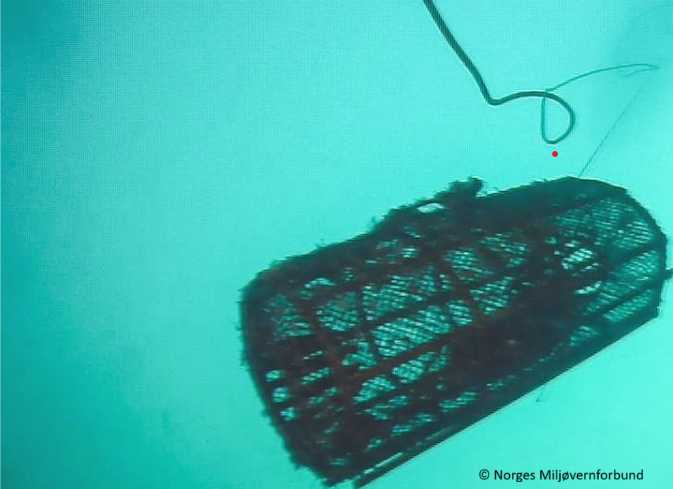
The study area focuses on Norway’s west coast, within the wider Bergen region. This rugged coastline, shaped by rocky shores, shallow bays, winding fjords, and scattered islands, provides diverse habitats for marine wildlife. One major challenge is the presence of lost fishing gear, such as abandoned crab and lobster pots, which continue to trap marine life, causing ecological harm. Locating and removing these "ghost fishing" traps from the seabed remains a significant difficulty. Norway’s sea and fjords are central to the cultural concept of allemannsretten, which grants public access for recreational activities like fishing, reinforcing the deep connection between Norwegians and the sea. Economically, fish production (including aquaculture) is a key industry, but the west coast also supports a variety of sectors due to its maritime access and urban hubs. Governance includes designated marine protected areas and seasonal fishing regulations to safeguard vulnerable populations.
The PRO-COAST initiative focuses on two main actions: (1) Raising awareness about ghost fishing by bringing the issue of prevention, clean-ups, and recycling to the attention of funders, environmental NGOs, leisure fishers, and public authorities; (2) Conducting a large-scale gear removal operation along the west coast and developing a best-practice manual to improve future efforts.
For information on our second Norwegian case study, see Case Study 10: Eidsvika below.
Visit our case-study website, available in Norwegian, to learn more about PRO-COAST activities in Norway.
EU Case study 8: Kloogaranna-Laulasmaa, Estonia. Partner Tallin Institute of Technology
22 Feb 2024
Our sandy beaches are located along the Baltic Sea, characterized by coastal dunes and expansive sandy shores. However, the area faces significant challenges due to urban pressure and its proximity to the capital, which intensifies environmental impacts. The region is densely populated and experiences a high influx of seasonal visitors. This creates social controversy, as local communities express concerns over environmental degradation, while economic interests drive further development. Seasonal tourism, second homes, and real estate expansion are key economic drivers, contributing to land-use pressure. Governance efforts include planning initiatives incorporating green infrastructure, legislative measures protecting coastal zones, and conservation strategies within designated protected areas.
The PRO-COAST initiative focuses on: (1) Addressing the social dimension by balancing stakeholder interests, ensuring high-quality public spaces, improving accessibility, and fostering sustainable recreational ecosystem services; (2) Strengthening multi-level governance by integrating perspectives from local and central authorities; (3) Providing evidence-based insights from researchers and stakeholders to support informed decision-making and inclusive stakeholder engagement; (4) Conducting interviews, participatory events, and mapping actions to enhance public involvement.
EU Case study 9: Corbu, Romania; Partner: Total PR
22 Feb 2024
This study focuses on a pristine beach along the Black Sea, featuring sandy shores, riparian forests, dystrophic lakes, and sandbanks. A key challenge is the absence of a supervisory body with expertise in coastal ecosystems, leading to gaps in management and protection. The local community faces a lack of environmental awareness, while overtourism and limited adoption of sustainable solutions further threaten the area. Tourism remains the primary economic driver. Governance falls under the Danube Delta Biosphere Reserve, which oversees conservation efforts.
The PRO-COAST initiative aims to: (1) Enhance local community engagement and environmental awareness through photography, surveys, and educational activities; (2) Support high-level discussions and facilitate stakeholder involvement; (3) Emphasize the ecological importance of local flora and fauna to encourage long-term commitment from communities, stakeholders, and policymakers toward ecosystem conservation.
Visit our case-study website, available in Romanian, to learn more about PRO-COAST activities in Romania.
Non-EU Case study 10: Eidsvika, Norway. Partner: University of Bergen
03 Dec 2024
The Eidsvika case focuses on one of the few wilderness areas on the island of Askøy, on Norway’s West coast just West Bergen. The area is one of the only places on the south of the island where residents can access the coast, provides habitat for several red-listed bird species and includes a bog area, which is a habitat threatened along the coast, and which provides environmentally important carbon sink. The case investigates the local community’s attempts to conserve the area in the face of efforts by a local development consortium to build a large (1.2 km) quay to berth cruise ships visiting Bergen and providing a new carbon-neutral transport hub for electric boats linking Bergen and the islands.
The PRO-COAST initiative focuses on two main actions: (1) working with Friends of Eidsvika (affiliated to Norwegian Friends of the Earth) to assess and conserve biodiversity in the area and (2) investigating and (with our sister project PRO-CLIMATE) modelling how local planning decisions are made, balancing biodiversity conservation, ecosystem services, green shift policies and economic priorities. The goal is to make the model accessible to planners and other stakeholders to help inform policy making and decision-making. You can access a trial version of part of the model here.
Visit our case-study website, available in Norwegian, to learn more about PRO-COAST activities in Norway.